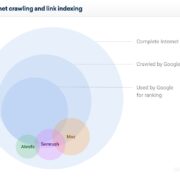Artificial Intelligence (AI) is rapidly transforming our world, driving innovation across industries and reshaping how we work, invest, and live. Investors are increasingly turning to Artificial Intelligence Exchange Traded Funds (AI ETFs) as a strategic way to ride the wave of this technological revolution. If you’re curious about AI ETFs, their investment potential, and the best ways to maximize returns while minimizing risks, you’re in the right place.
Table of Contents
-
Introduction: Why AI is Called the New Electricity
-
What is Artificial Intelligence?
-
The Growing Role of AI Across Industries
-
AI ETF Basics: All You Need to Know
-
Benefits of Investing in AI ETFs
-
Key Types of AI ETFs
-
AI-Dedicated ETFs
-
Robotics & Automation ETFs
-
Big Data & Cloud AI ETFs
-
-
Top Performing AI ETFs in 2025
-
How to Research and Select the Right AI ETF
-
Managing Risks: What Investors Should Know
-
Practical Examples and Case Studies
-
Future Outlook: AI Investment Trends
-
Frequently Asked Questions (FAQ)
-
Conclusion & Call to Action
Introduction: Why AI is Called the New Electricity
If “data is the new oil,” then Artificial Intelligence is the new electricity. Much like electricity, AI has become the core infrastructure powering modern innovation and automation. From self-driving cars and virtual assistants to advanced robotics and real-time analytics, AI’s impact spans every facet of the economy.
AI’s exponential growth means investors who tap into this trend early can experience significant upside. But how can you participate in this revolution without betting everything on one company? Enter the AI ETF—a diversified pathway to invest in multiple market leaders at once.
What is Artificial Intelligence?
Artificial Intelligence (AI) refers to computer systems that can perform tasks typically requiring human intelligence. These include:
-
Pattern recognition
-
Natural language processing
-
Image and speech recognition
-
Autonomous decision-making
First introduced in 1956, AI’s journey evolved from playing basic games to defeating grandmasters in chess and Go. Today, AI is vital for everything from healthcare diagnostics to financial modeling and smart city planning.
The Growing Role of AI Across Industries
Artificial intelligence is integral in:
-
Healthcare: AI assists with faster, more accurate diagnoses.
-
Finance: AI algorithms analyze markets and predict trends.
-
Retail: Personalized shopping experiences are powered by AI-driven analytics.
-
Manufacturing: Robotic automation streamlines production.
-
Transportation: Self-driving technology is revolutionizing how we move.
-
Cybersecurity: AI detects and prevents digital threats in real time.
Example: In 2025, AI-powered tools boosted supply-chain efficiency for Fortune 500 companies by over 30%.
AI ETF Basics: All You Need to Know
What Is an AI ETF?
An AI ETF is a basket of stocks focused on companies leading AI innovation. Instead of investing in a single stock, you purchase shares of the ETF, gaining exposure to multiple AI-related businesses.
How AI ETFs Work
-
Diversification: Own portions of numerous AI firms
-
Liquidity: Buy and sell easily on major stock exchanges
-
Low fees: Expense ratios often lower than actively managed funds
Key Terminology
-
UCITS: Undertakings for Collective Investment in Transferable Securities (European regulation)
-
Accumulating: Dividends are reinvested
-
Replication: How closely the ETF tracks its index
Benefits of Investing in AI ETFs
-
Reduced risk compared to individual AI stocks
-
Access to global innovators: ETFs often hold firms from multiple countries (US, Europe, Asia)
-
Potential for high growth: The AI sector has outperformed traditional tech indices in 2025, with some ETFs gaining over 40% year-to-date.nasdaq+5
-
Fewer company-specific surprises: Diversification cushions against poor performance of any single stock
Why Not Pick Individual AI Stocks?
While a company like Nvidia or Alphabet could soar on AI advancements, it could also stumble on regulatory, competitive, or earnings challenges. AI ETFs spread your risk across dozens of leading innovators, making portfolio shocks less severe.
Key Types of AI ETFs
AI-Dedicated ETFs
These target firms directly engaged in developing AI technology (software, hardware, data analytics).
Robotics & Automation ETFs
Focus on companies building intelligent robots and automation platforms.
Big Data & Cloud AI ETFs
Include providers of cloud infrastructure and big data processing (Amazon Web Services, Microsoft Azure).
Notable ETFs in 2025
-
Global X Artificial Intelligence & Technology ETF (AIQ)
-
VanEck Semiconductor ETF (SMH)
-
WisdomTree Artificial Intelligence and Innovation Fund
-
Roundhill Generative AI & Technology ETF (CHAT)
-
ROBO Global Artificial Intelligence ETF (THNQ)
Top Performing AI ETFs in 2025
2025 Performance Standouts:
-
Roundhill Generative AI & Technology ETF: +49.5% YTD
-
VanEck Semiconductor ETF: +42.5% YTD
-
WisdomTree Artificial Intelligence and Innovation Fund: +34% YTD
-
ROBO Global Artificial Intelligence ETF (THNQ): +44% YoYfinance.
Expense Ratios (low fees are best):
-
Most popular AI ETFs charge between 0.30% and 0.75% annually.
Holdings Examples
-
Nvidia, Alphabet, Microsoft, Amazon, Alibaba, AMD, Salesforce, Tesla
How to Research and Select the Right AI ETF
Step 1: Define Your Goals
-
Growth vs. income
-
Geographic exposure: US, global, Asia, Europe
Step 2: Compare Key Metrics
-
Expense ratio (lower is better)
-
Fund size and liquidity
-
Diversification: Number of holdings, sector spread
-
Historical performance (but don’t rely solely on past results)
Step 3: Understand the ETF’s Strategy
-
Is it focused on AI developers, users, or a mix?
-
Does it use full replication, sampling, or synthetic replication methods?
Quick Checklist Before Investing
-
Read the ETF’s fact sheet and prospectus
-
Check the top holdings—do they match your view of AI’s future?
-
Consider the ETF’s size and how easily it can be traded
Managing Risks: What Investors Should Know
Major AI ETF Risks
-
High volatility: AI stocks can swing in price rapidly
-
Regulatory and ethical uncertainty: AI faces evolving global regulations (privacy, bias, accountability)
-
Sector concentration: Some ETFs heavily invest in just a few companies, increasing risk
Risk Management Tips
-
Diversify across several ETFs if possible
-
Consider broader tech or thematic ETFs if concerned about sector bubbles
-
Use dollar-cost averaging to smooth out entry prices
-
Stay updated with news and regulations affecting the sector.
Practical Examples and Case Studies
Case Study: AI ETF Success in 2025
An Indian retail investor diversified Rs. 5 lakh across three leading AI ETFs in early 2025. By November, their portfolio grew by 31%, outperforming the Nifty 50 and the Nasdaq 100. Most gains came from rapid adoption of generative AI, surging demand for cloud infrastructure, and strong semiconductor performance.
Example ETF Portfolio Allocation
-
40% in Global X Artificial Intelligence & Technology ETF
-
30% in VanEck Semiconductor ETF
-
30% in ROBO Global Artificial Intelligence ETF
Future Outlook: AI Investment Trends
-
Market growth: The global AI market is projected to reach $3.5 trillion by 2033, growing at a compound annual rate of over 31%.globalxetfs+1
-
Enterprise adoption: Over 75% of major companies now deploy AI in some form for competitive advantage.
-
Emerging domains: Quantum computing, AI cybersecurity, and autonomous systems will shape the next wave of ETF composition.
Frequently Asked Questions (FAQ)
-
What is an Artificial Intelligence ETF?
-
An AI ETF is a fund that invests in companies leading the development and deployment of artificial intelligence technologies.
-
-
Are AI ETFs a safe investment?
-
AI ETFs carry risks like volatility and sector concentration but are generally safer than betting on individual AI stocks, thanks to diversification.
-
-
How do AI ETFs differ from AI-powered ETFs?
-
AI-powered ETFs use machine learning algorithms to select holdings, while AI ETFs invest in AI companies themselves.
-
-
What are the best AI ETFs in 2025?
-
Top names include Global X AIQ, VanEck SMH, Roundhill CHAT, WisdomTree WTAI, and ROBO THNQ.money.
-
-
How can I start investing in AI ETFs?
-
Open a brokerage account, research the funds, compare expense ratios, and begin with a diversified approach.
-
-
Do AI ETFs pay dividends?
-
Many pay dividends, often reinvested within the fund (accumulating).
-
-
Can AI ETFs help me avoid company-specific risks?
-
Yes! By holding shares from many companies, you’re less exposed to the fate of any single firm.
-
Conclusion
Artificial Intelligence is transforming industries, generating massive opportunities for investors. AI ETFs offer a smart, diversified way to tap into the AI revolution, benefiting from growth across software, hardware, robotics, and big data.
Ready to power your portfolio with the force of AI? Start researching AI ETFs today and position yourself for the future—because investing in AI isn’t just about chasing the next trend; it’s about being part of the new electricity powering the world.
Want to learn more, stay updated on AI ETF trends, or get investing tips? Subscribe to our newsletter, leave a comment with your questions, or check our latest guides!
- https://www.nasdaq.com/articles/what-are-10-best-performing-artificial-intelligence-ai-etfs-2025
- https://leverageshares.com/en-eu/insights/best-performing-ai-etfs-in-2025/
- https://www.sofi.com/learn/content/top-ai-etfs/
- https://www.justetf.com/en/how-to/invest-in-artificial-intelligence.html
- https://money.usnews.com/investing/articles/best-ai-etfs-to-buy
- https://nai500.com/blog/2025/11/top-performing-ai-etfs-in-2025/
- https://finance.yahoo.com/news/ai-tech-trends-3-etfs-071500718.html
- https://www.ishares.com/us/strategies/investing-in-ai-etfs
- https://www.cnbc.com/2025/11/14/tech-stock-etfs-investors-market-gains-buy-sell.html
- https://www.globalxetfs.com/funds/aiq/




















Comments